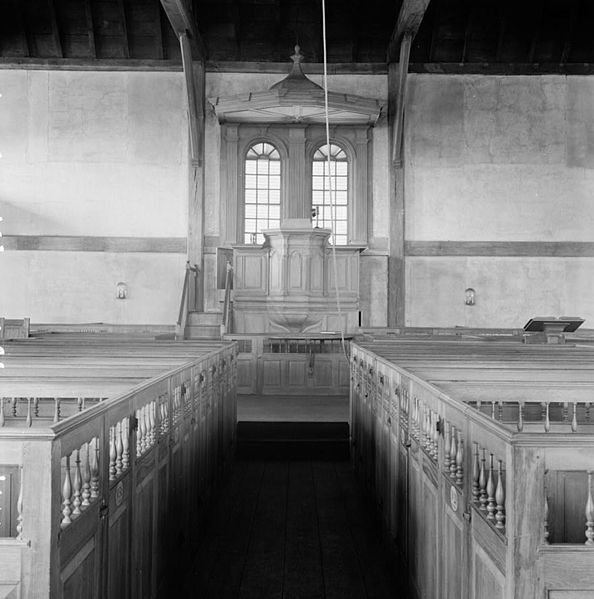April 20 marks the 300th birthday of David Brainerd, the celebrated missionary to Native Americans and protege of Jonathan Edwards. Edwards’s publication of Brainerd’s journal made Brainerd an enduring inspiration to many Christians, including missionaries, for a century and more after Brainerd’s untimely death at 29 years old.
In 2010, I published a review of John Grigg’s excellent book The Lives of David Brainerd (2009), which should give you a taste of the significance of Brainerd’s career and legacy.
In this important book that should be read by scholars of American and British evangelicalism, John Grigg provides a compelling biographical portrait of Brainerd, one of Christian history’s most influential missionaries. It offers new information on episodes such as Brainerd’s famous expulsion from Yale, which may have been precipitated by more persistent, abrasive radicalism than Brainerd simply declaring that tutor Chauncey Whittelsey had no more grace than a chair. Grigg posits that Brainerd’s experiences at Yale challenged him to break out of his staid, prosperous background in Haddam, Connecticut, yet his upbringing reined in Brainerd’s radicalism, leading him to seek readmission to Yale and to repudiate separatism. . . .
In 1742, when Ebenezer Pemberton of New York arranged a meeting for him with agents of the Society in Scotland for Propagating Christian Knowledge, who recruited him to work as a missionary to Native Americans. By that point, Brainerd was more than ready to take up a mission to Native Americans as a way to resolve the agonizing tension between the glory and fractiousness he experienced in the radical revivals.
From 1742 to 1745, Brainerd wandered from one mission to another. The close attention Grigg gives to Brainerd’s rambling provides an excellent picture of both Brainerd’s own vocational struggles, and the cross-section of evangelical churches of New England, Long Island, and the Middle Colonies. Grigg thinks that Brainerd gravitated toward an Indian mission because it might have allowed him to avoid the divisions rending the colonists’ churches. But he also wished to find a group of Indians who would respond to his preaching, and he went a long time without seeing any Native Americans convert, except for his translator, Tatamy. Brainerd received offers in 1744 for pastorates in Connecticut and Long Island, but he resisted, even as he continued regularly to visit Presbyterian congregations in New Jersey and Pennsylvania, and presided over a number of conversions there that reminded him of the fervent days at Yale.
His preaching among Native Americans took a positive turn in 1745, however, when he went to the Indians of Crossweeksung, New Jersey. There he led a considerable revival among the Delawares that garnered notice across America and Britain. Grigg believes that the Crossweeksung Delawares, as a settlement of displaced refugees, were particularly open to Brainerd and Tatamy’s preaching because the Indians’ religious traditions and sacred sites were disrupted or lost.
Moreover, Brainerd at least tolerated the Native Americans’ longstanding emphasis on dreams and visions of the divine, maintaining a strain of radicalism that Brainerd’s patron and biographer Jonathan Edwards tried to downplay. Although Grigg’s focus on this sustained, pragmatic radicalism represents a new interpretation of Brainerd—others, including myself, have emphasized his post-Yale transition to moderate evangelicalism—it seems plausible that Brainerd may have indulged the mystical experiences of some Indian converts, especially when he did not fully understand their testimonies because of language barriers.
As the Crossweeksung community faced pressure from colonial authorities to relocate, Brainerd’s health also entered massive decline, and he left New Jersey to convalesce in Massachusetts in 1747. Grigg has no patience for the romantic tale of Brainerd’s deathbed relationship with Jerusha Edwards, and he abruptly dismisses the story as an irrelevant invention of the nineteenth century. . . .
Brainerd’s posthumous celebrity would be minimal without Jonathan Edwards’s publication of The Life of David Brainerd, which became one of Edwards’s most influential writings. Grigg shows that Brainerd became Edwards’s representative Christian, a person who experienced a powerful conversion but who remained fervently devoted to God to the end, in stark contrast to the formerly zealous Northamptonites who turned against Edwards in the late 1740s.
Grigg helpfully places Edwards’s editing of Brainerd’s diary in the context of his feud with the Northampton Church. Edwards also removed indiscreet references to visions and provocative theological notions from Brainerd’s account, leaving a solidly moderate yet thoroughly serious Christian for generations of evangelicals to admire. But his devotees put Brainerd to a variety of uses and presented updated versions of Brainerd appropriate to current culture. John Wesley, for example, published an edition of Edwards’s Life of Brainerd that painted Brainerd as a sober, self-sacrificial Arminian. Admirers from William Carey to Jim Elliott reflected on Brainerd as the ideal missionary, willing to sacrifice health and court death in the name of Christ.
This review appeared as “The Lives of David Brainerd: The Making of an American Evangelical Icon. By: Kidd, Thomas S., Church History, Sept. 2010, Vol. 79, Issue 3.”
See also John Piper, “His Suffering Sparked a Movement: David Brainerd (1718-1747)“
